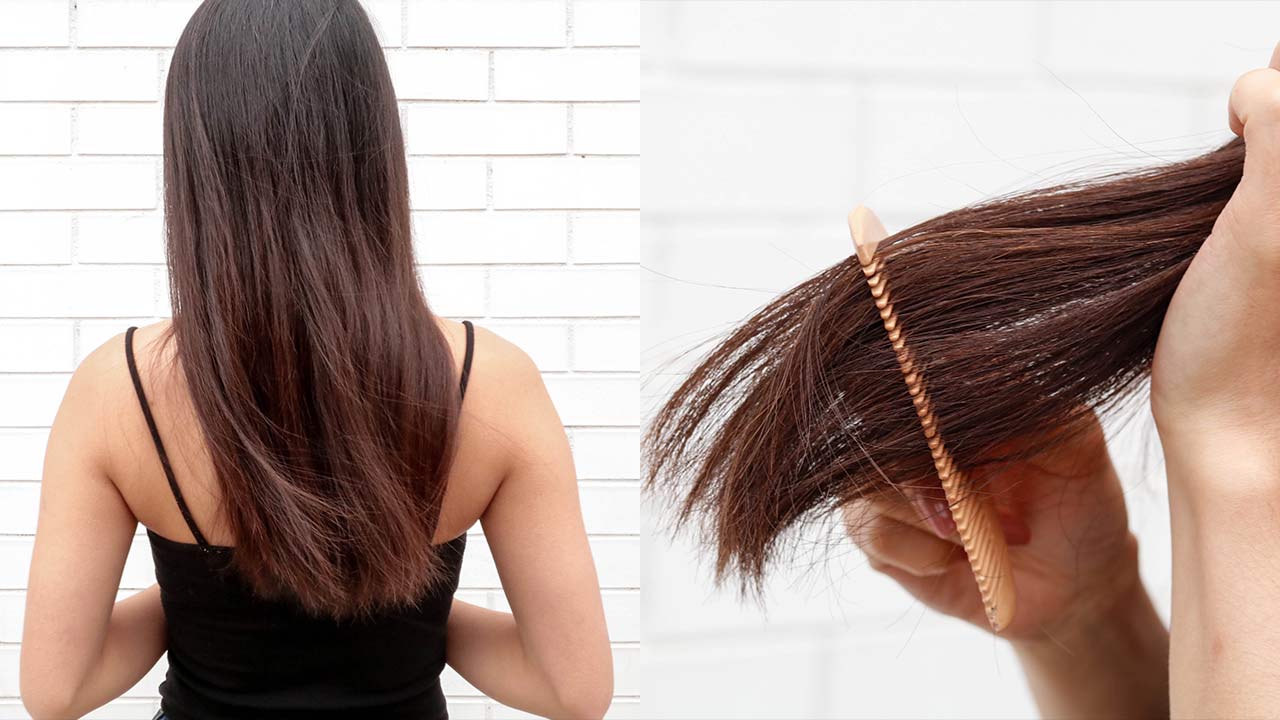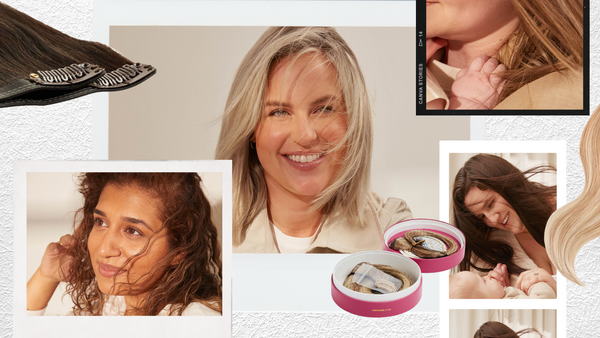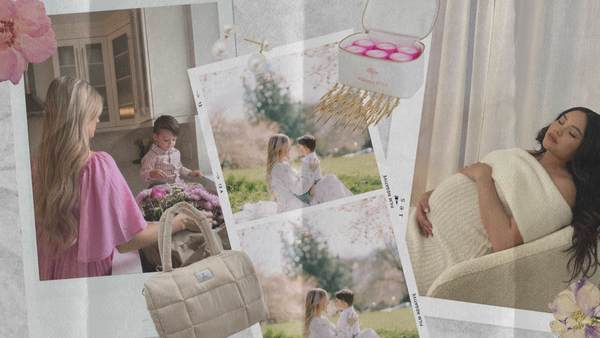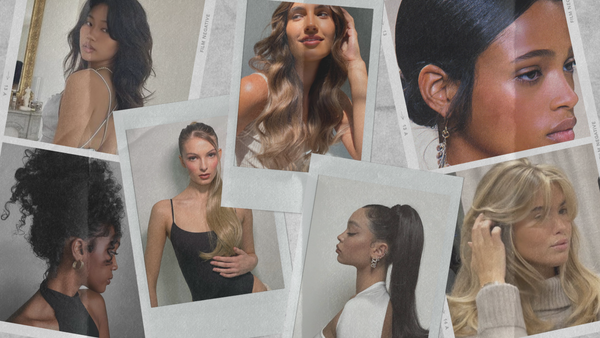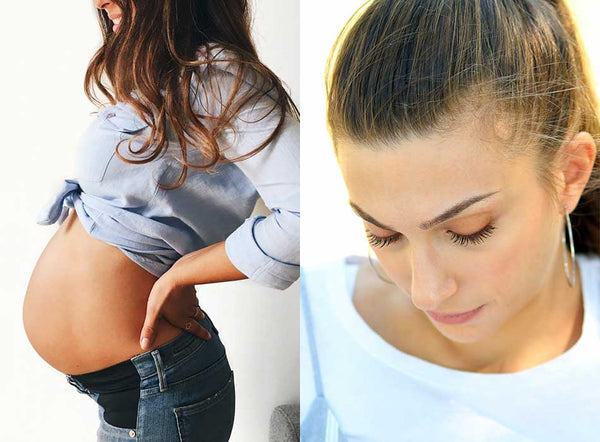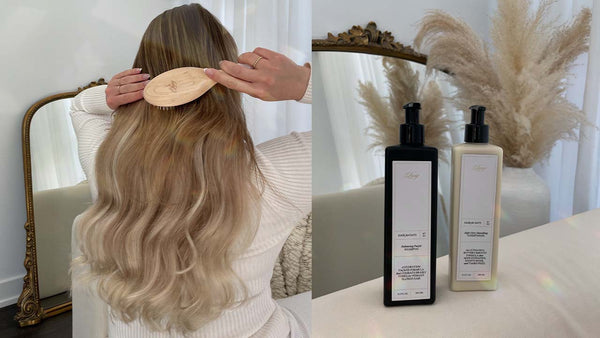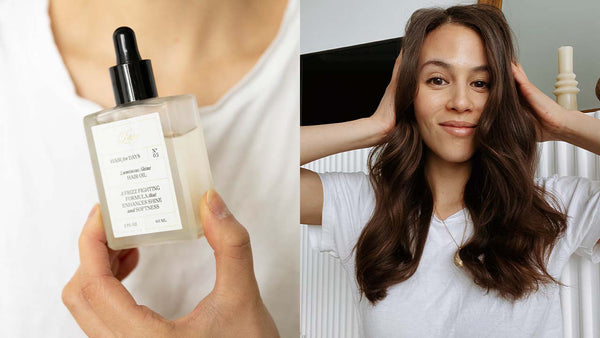Split ends. They happen slowly, then all at once. At first they are barely detectable, an occasional flyaway here, a frayed end there. Nothing to worry about...nothing a quick snip of the scissors or a little hair oil won’t fix, right? Then, before you know it, your neglected trips to the hairdresser have caught up with you and you’re dealing with scraggly ends, dryness, and a whole lot of frizz.
For some, split ends are a chronic problem, while others can maintain long, strong, healthy hair with little to no effort. But although genetics plays a role in your hair’s ability to grow without breakage, there are steps you can take to reduce your risk for split ends. From why you get them in the first place to how to prevent slip ends, we’ve got everything you need to know below.
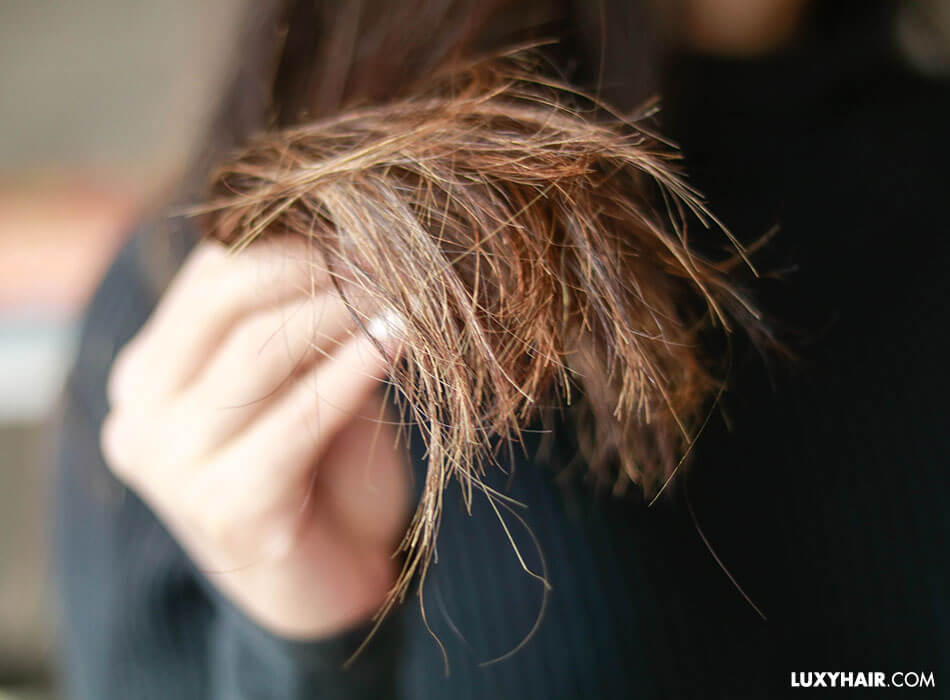
What are split ends?
Put simply, split ends occur when a single strand of hair splits into two. If you’re the sort of person who habitually pulls apart your split ends without even realizing you’re doing it, then chances are you’re well acquainted with the problem. But what are split ends, really? And what happens if they are left untreated?
Scientifically dubbed “trichoptilosis”—a name that’s reminiscent of some sort of disease—split ends occur due to the splitting or fraying of the hair shaft. Although split ends are most recognizable on the ends of the hair (and since those cells are the oldest, they are most likely to fray), they can actually occur anywhere on the strand.
Although having some split ends in your hair is totally normal, in large amounts, they are a major red flag. Not only are they aesthetically undesirable, but they also indicate that your hair is damaged, dry, and unhealthy overall. If you neglect proper care, the problem can escalate pretty quickly, resulting in severe hair breakage throughout your strands and brittleness overall. So if you’ve never actually taken the time to assess your hair close up to determine if there’s any splintering going on, but you can’t seem to grow your hair past a certain length, split ends just might be the problem.
What causes split ends?
Every day bad hair habits
While genetics play a role, there are a number of factors which cause split ends to manifest. The most common culprits are everyday stressors like taking a hot shower, brushing out tangled hair, putting your hair up in a towel to dry, and sleeping with your hair tied back—all of which can lead to hair breakage and split ends. For most people, these grooming practices are a routine occurrence, so they are actually causing damage to their hair without even realizing it.
Heat styling
Frequent use of hot styling tools like hair dryers, straighteners, curling irons, and hot rollers have a large impact as they strip the hair of moisture, which in turn, makes it far more delicate and susceptible to splitting.
Chemical treatments
Chemical straightening treatments and perms, along with dying or bleaching your hair, all weaken the integrity of your precious hair strands, which increase your likelihood for split ends.
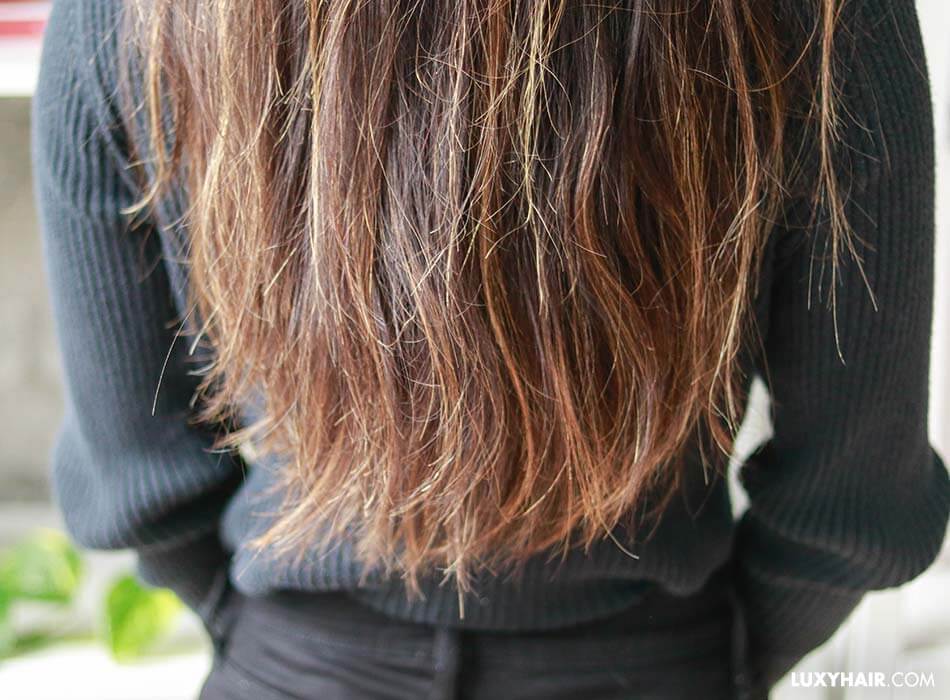
Using the wrong hair products
As well, using hair products that are full of drying agents and alcohols further strip the hair, increasing dryness and hair breakage overall. Lastly, if you’ve been basking in the satisfaction of peeling off your own split ends, or if you skip out on regular trims in an effort to grow your hair, you’re not doing yourself any favors.
Climate and weather
While all these factors are largely within your control, there are some lesser known causes of split ends which are harder to pinpoint and manage. Environmental aggressors such as sun exposure or a lack of humidity can all lead to dryness, thereby making you more prone to developing split ends.
Bad nutrition
Ever heard the phrase, “you are what you eat?” Well, it’s true! A lack of nutrients due to an unsatisfactory diet, vitamin deficiencies, and hormones all play a role in the health of our hair.
How to get rid of split ends?
Trim them off
Unfortunately, you can’t exactly get rid of split ends once they happen. The only real cure for split ends is a trim, which is why being proactive and preventing them in the first place is vital. Although it may seem counterintuitive, getting regular trims will actually help your hair grow faster and stronger. This is because, if the split ends aren’t cut off, the hair will just continue breaking higher and higher along the hair shaft, and you’ll end up with frizzier hair as a result. While you can try using smoothing hair products such as oils, serums, gels, or pomades to help hydrate the hair, minimize the appearance of split ends, conceal flyaways, and tame unruly frizz, regular trims are the only cure for split ends once they appear.
Fake it 'till you make it

While prevention is the best approach, we know that the road to full, healthy hair can be a long one, particularly if you are prone to split ends and breakage, or if you color or heat style your hair often. In the meantime, we’ve picked up some insider tips to help you fake it until you make it.
Start off by spraying a leave-in conditioner throughout your lengths while your hair is still damp. Then, use a hair oil or serum (a natural formula is best), concentrating it on your mid-lengths and ends to help hydrate the hair and smooth down the cuticle. Once your hair is fully dry, use a little bit more product on the ends of your hair as this will help give you a sleeker, more polished look. Finally, to address hair breakage around your hairline or closer to your roots, use a small amount of hairspray or smoothing pomade on a toothbrush to get rid of any unruly flyaways.
Hide them with hair extensions
Of course, if you want to amp up your hair game or are looking to add some fullness or length to your hair so it looks healthier overall, a set of Luxy Hair extensions will make those split ends non-existent. Even if your hair is relatively healthy but lacks the thickness and length you desire, clipping in some Luxies will really take your look to the next level.
How to prevent split ends
When it comes to split ends, prevention is the best treatment. So whether or not you were blessed with healthy, resilient hair, there are a number of things you can do to prevent split ends and maintain the integrity of your strands. It’s important to keep in mind that split ends and dryness go hand-in-hand, so keeping your hair hydrated is key.
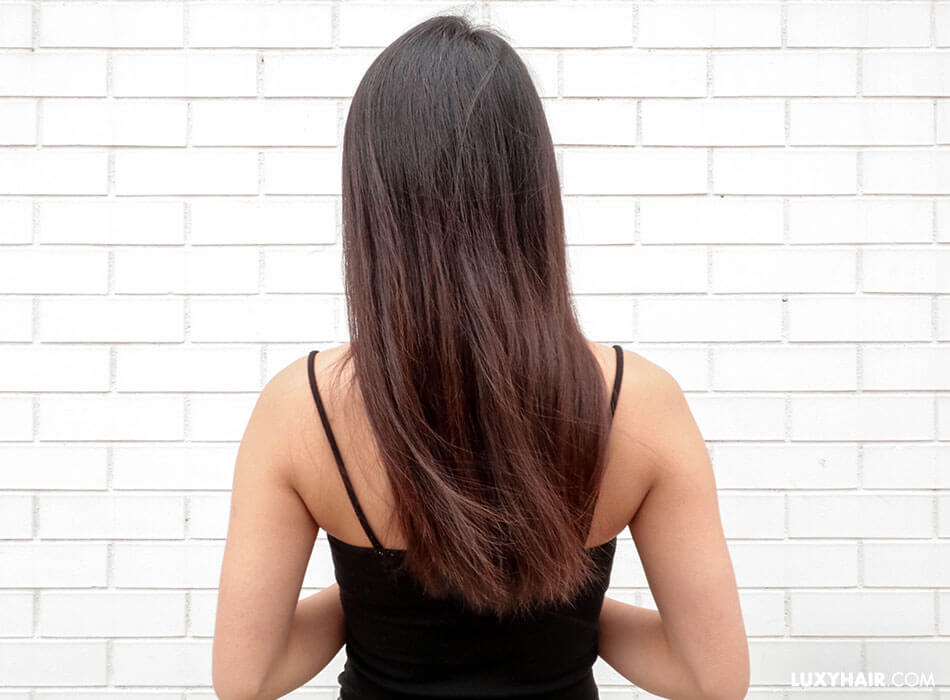
Nourish your hair from the inside out
Our first and foremost tip when it comes to growing shiny, long, strong, hair, is nourishing yourself with food. This means eating a balanced diet that’s rich in fruits, vegetables, and healthy fats, and being proactive by taking supplements if you feel like you may not be getting all the nutrients you need from your diet alone.
Biotin and folic acid in particular have a demonstrated ability to improve hair health, length, and thickness. Biotin (found in walnuts, lentils, and brown rice) works by metabolizing fats, carbohydrates, and proteins in a way that strengthens both the hair and nails, whereas folic acid (found in leafy greens and oranges) helps facilitate the production of red blood cells which powers hair growth. Also, ensuring you are well-hydrated is key. Need some more guidance? We’ve got more information on what to eat for healthy hair here.
Get regular trims
Make sure to get regular trims (every 6 to 8 weeks is ideal), so that you nip the problem in the bud and prevent your split ends from travelling up the shaft of your hair. It goes without saying that if you have a habit of peeling your split ends apart, you should stop doing so immediately and make a trip to the hairdresser instead.
Ultimately, it all comes down to keeping your hair optimally nourished and moisturized. While it’s impossible to avoid split ends entirely, by following the above tips and exercising caution when handling your hair, you can certainly minimize your risk.
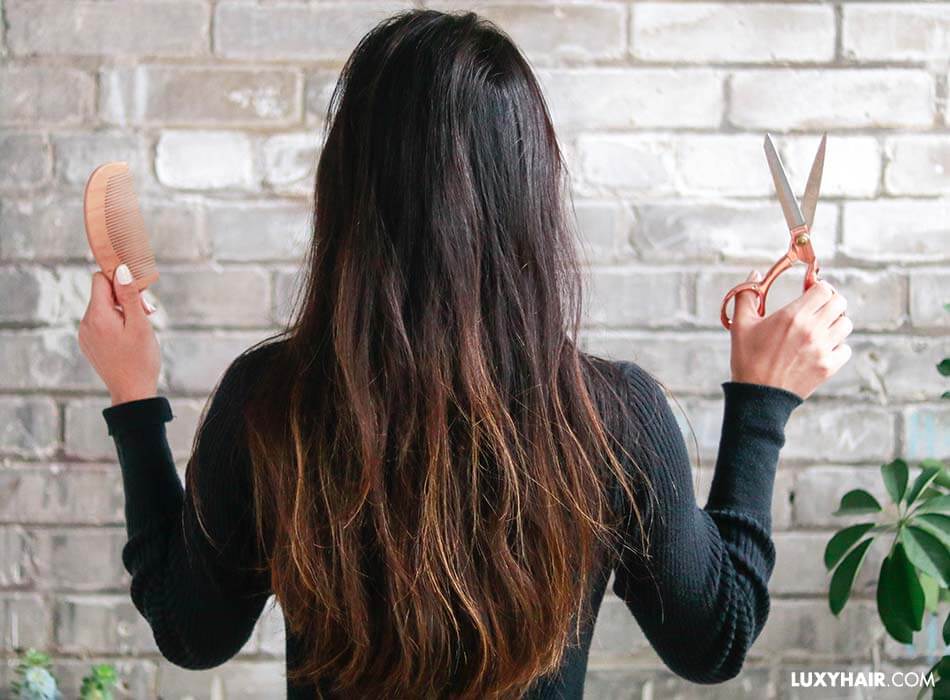
Use the right products
Another way to keep split ends at bay is by washing your hair less frequently and using the right shampoos, conditioners, and styling products. For instance, it’s also best to stay away from clarifying shampoos which can be hard on the hair, stripping it of necessary oils.
Many conventional hair products are filled with toxic chemicals, harsh drying agents, and other ingredients like parabens and sulfates which do your hair more harm than good. Be sure to read ingredient lists when you’re out shopping and opt for natural hair care products whenever possible.
As well, be on the lookout for products that are designed for dry, damaged hair. Keep in mind that although higher-quality formulas can be more expensive than traditional products, you’ll be taking a proactive approach. Plus, you’ll be saving yourself from trying to revive your hair down the line with one of those costly salon treatments.
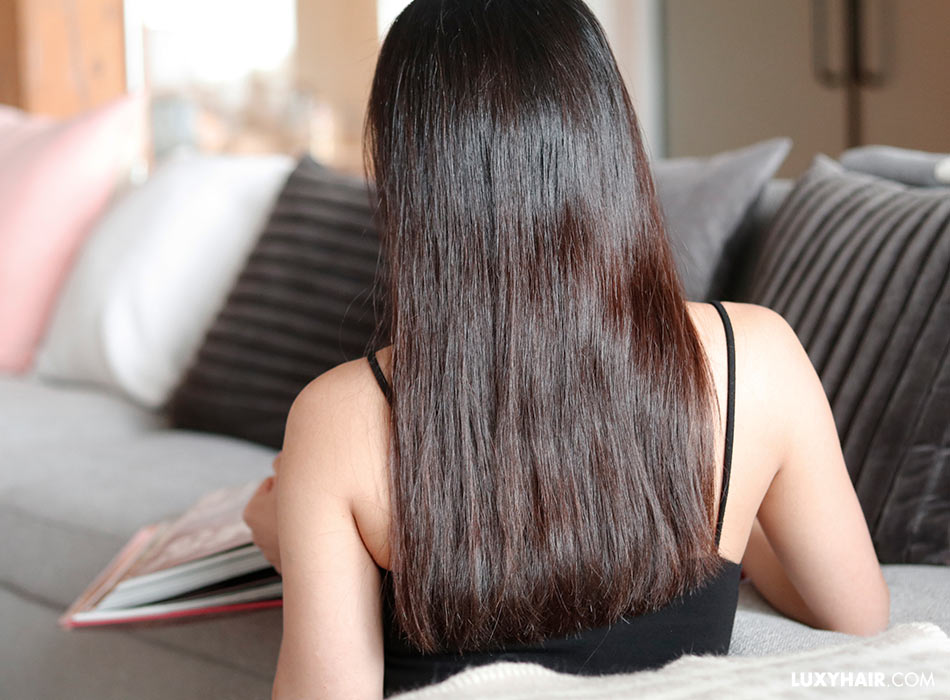
Condition your hair first
You can also try out the condition-shampoo-condition method if your hair is feeling especially brittle. Rather than starting off by shampooing your hair, apply conditioner to the mid-lengths and ends before shampooing as this will help reinforce and protect the hair so it can better lock in moisture. Finish off by conditioning your hair again for added shine and softness.
Try an at-home treatment
To give your hair an extra dose of TLC, try to schedule a pamper night once a week and treat yourself to a hair treatment. This DIY coconut repairing mask is great for repairing damaged hair, and best of all it only calls for 2 ingredients! In fact, research has shown that treating hair with oils actually helps prevent split ends from forming. Don’t have coconut oil on hand? Not to worry! Almond oil and olive oil are also a great alternative. Just be sure to shampoo your hair twice to ensure your get everything out so you hair doesn’t dry with a greasy film. Whatever your preference, we’re willing to bet that you have some of these ingredients lying around your kitchen. Make sure to let us know which mask recipe was your favorite.
Avoid coloring your hair
While sticking to your natural color is best, we know it’s not for everyone, so if you dye or bleach your hair, try to do so less often or opt for a more natural coloring technique like balayage or babylights. Since these styles are lower-maintenance, you won’t have to touch up your color as often, which will save your wallet and your hair!
Use a heat protectant
While going without heat styling your hair is best, we know that this isn’t always feasible, so be sure to use a heat protectant before blow drying, curling, or straightening your hair. Although this won’t prevent heat damage entirely, it can certainly help mitigate the impact of your hot tools and reduce your likelihood for damage. Also, if you have time to spare, try to let your hair air dry as much as you can before styling.
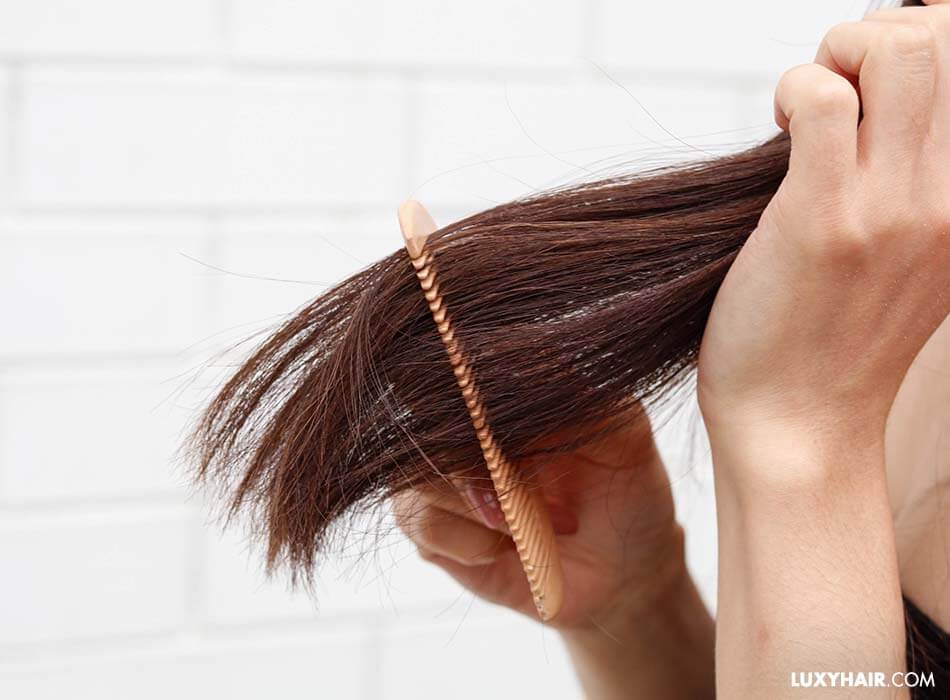
Embrace your natural texture
Try your best to embrace your hair’s natural texture as much as you can. If you get regular perms or are a Brazilian Blowout addict, you may want to kick that habit to the curb; not only are the chemicals bad for your hair, inhaling the fumes during your treatment can be extremely dangerous. Although heat styling your hair doesn’t pose quite the same risk, consistently using hot tools can be extremely drying, worsening breakage and split ends. Still, we know that for many of us, leaving our hair in its natural, frizzy state can seem daunting, so taking baby steps is best. Why not try out our Week Without Heat challenge, or if you’re feeling especially adventurous, check out our heatless wave tutorials so you can achieve a beachy wave or a bouncy curl - no heat necessary!
Turn down the heat
Avoid cranking up the temperature on your hot tools all the way. Not only is this unnecessary, but can also be extremely damaging. Similarly, try blow drying your hair at the medium heat setting rather than high.
Be gentle
It’s also important to be as gentle as possible when handling your hair. For instance, try to avoid brushing your hair after you get out of the shower, as wet hair is increasingly susceptible to breakage. Instead, use a wide tooth comb while you’re in the shower to remove tangles, starting at the bottom of your hair and working your way slowly upwards. Also, be gentle when towel drying your hair and avoid twisting and wringing. If you can forgo the towel entirely and use an old-cotton t-shirt in its place, that’s even better. Even something as simple as overwashing your hair can dry it out and make it more brittle. Similarly, if you’re a ponytail kind of gal, you may want to reevaluate; elastic bands and hair ties can cause snagging so it’s best to tie your hair back loosely and opt for a scrunchie or a hair clip instead of a conventional hair elastic.
Sleep on a silk pillowcase
Other tips include sleeping with your hair down and swapping out your cotton pillowcase for a silk one; not only does it have more slip which prevents your hair from snagging while you toss and turn, it’s also great for preventing wrinkles.
So whether you seem to perpetually deal with split ends or only notice them on occasion as a reminder that you’re due for a cut, prevention—coupled with regular trims—is the best remedy. By eating a balanced diet, using the right products, limiting heat exposure, avoiding chemical treatments, and trying to be as gentle as possible when styling and handling your hair, you can drastically improve the health of your hair over time. Trust us, long, strong, healthy hair can be yours sooner than you think.
